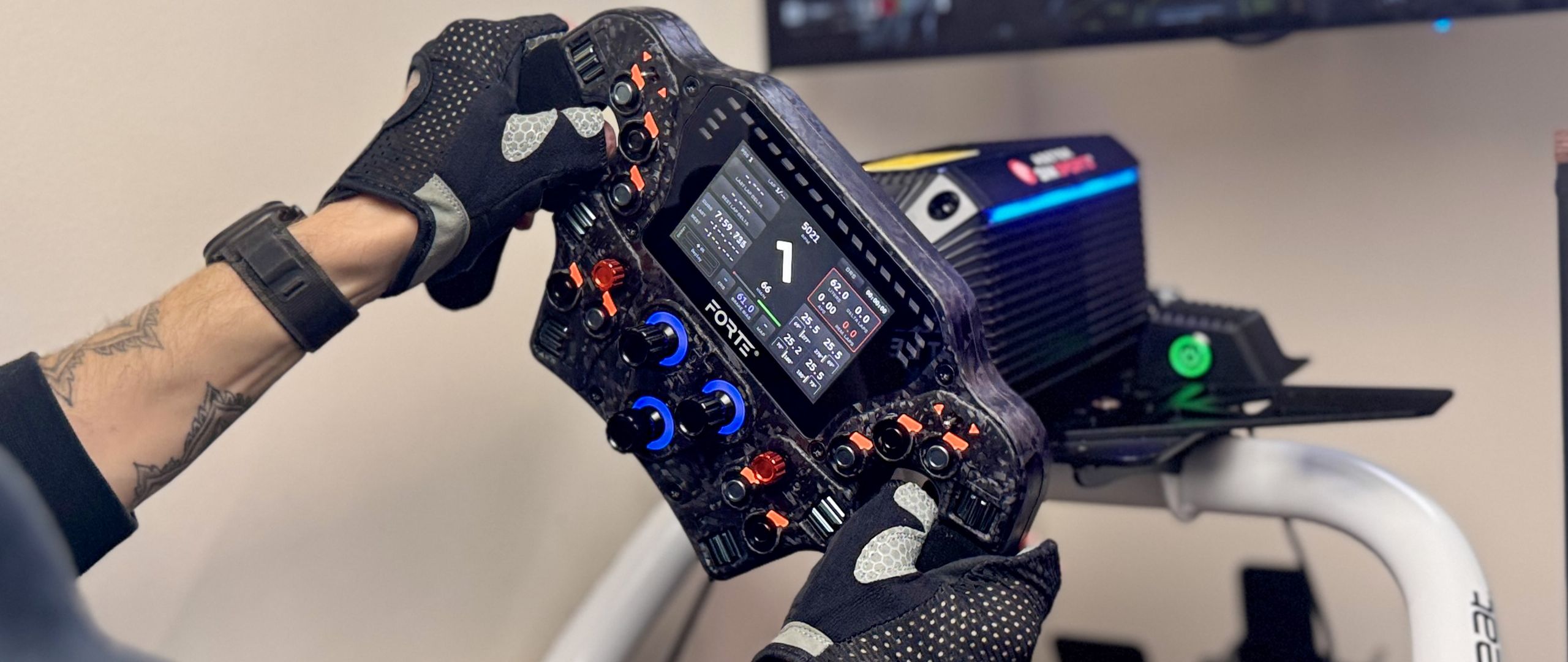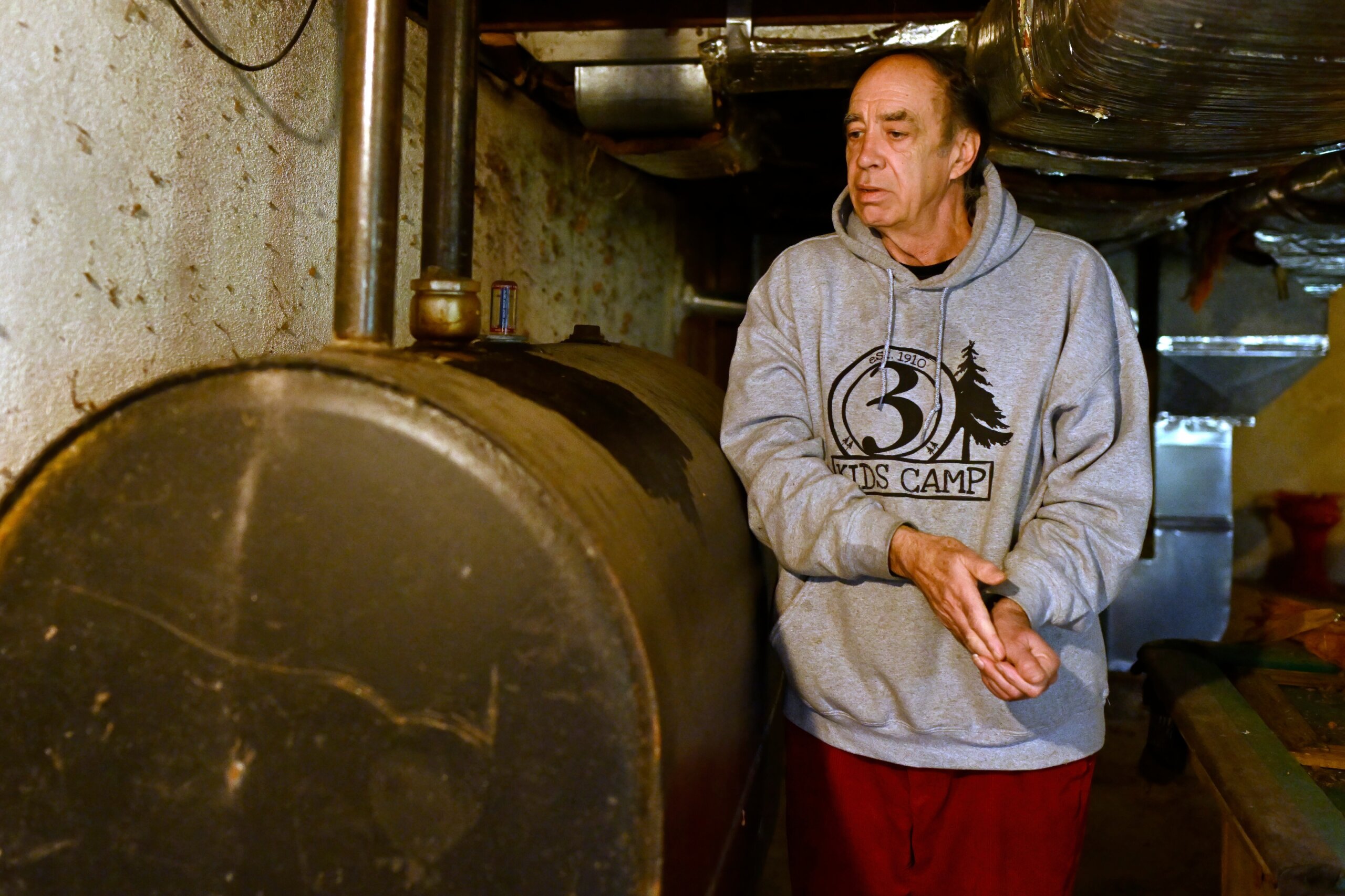Copyright tomsguide

Motor racing can be a brutal sport, and that could be said about sim racing too, as I finished middle of the pack after an endurance race with some serious arm ache. But you know what? I’d do it all again with the Asetek Forte setup. If the price of over $2,000 doesn’t make it obvious enough, this wheel and pedals are strictly for the pros, and if that didn’t make you flinch, the raw 18 newton-meters of direct drive forced feedback will. The first time I took this out for a test drive, I felt like I was trying to wrestle Godzilla! But as you put the hours in, get used to the near true-to-life racing force and get in the gym (anything to strengthen those forearms recommended), then you’re in for an all-immersive drive. Every singular granular detail of your car’s inner workings can be felt with impeccable precision to help you with trail braking and correcting any oversteer the millisecond you feel it. Connecting the Formula Pro wheel brings all of the ergonomic controls you could possibly want, along with a finely sculpted shape for driving — plus that impressive display for all your telemetry information (which rotates as you steer to stay level). Topping off the whole package are the Forte load cell sim pedals pack a mean-looking black anodized aluminum finish and a relatively thin profile on my pedal base. All of this was effective camouflage for some of the best pedals I’ve used in sim racing, with that patented mechanical load cell brake pedal providing an impressive level of force and super accurate readings — meaning I could get into the differences of 2-3% braking force to get the optimal speed through a corner. All is glorious, but you are paying a pretty penny for it, and if you are using something like the PlaySeat Formula Instinct (or anything with an 80mm base plate for wheel mounting), get ready for a bit of an awkward setup. However, if you’re committed to the ultimate driving experience and money is no object (jealous), this is a phenomenal option. Asetek Forte: Cheat Sheet Who is it for? Asetek Forte is for the bona fide sim racing pros. If you have a couple of years of sim racing experience under your belt and you’re looking to kick things up a notch, head in this direction.What does it cost? Get your bank account ready. The Forte wheelbase costs $949, the Forte pedals are $479, and while the Formula Pro wheel is not available in the U.S. (yet), MSRP is set to $649. Leading to a grand total of $2,077.What do we like? This is a mind-blowing driving experienceWhat don’t we like? Be warned. This wheel will humble you for the first few hours as you get used to its driving force, and setup can be a little awkward depending on what kind of rig you have for mounting. Asetek Forte: Specs Asetek Forte: The ups I should’ve known I was in trouble when a sim racing wheelbase came with a killswitch. Like I said, the Forte will humble you at first if you’re moving up to the big leagues for the first time. But trust me, the pay-off is so sweet. Feeling the drive So let’s start with the real engine of this whole operation — that monolith of a wheelbase. I’ve actually tried a more expensive entry into Asetek’s lineup. The Invicta comes in at a mind-boggling 27Nm and, well, word to the wise after a sprained wrist on this one: if you spin out, either hang on for dear life or get your hands off that wheel and hit that killswitch as quickly (and safely) as possible! Well, the Forte base has that same crispness, that same level of finite detail and low inertia as its much more expensive sibling (without the risk to your wrist health). And put simply, it’s an immersive drive you don’t forget. The unmatched smoothness of the steering (some direct drive wheels can see some friction caused by the magnetism of the coil inside) makes it oh-so smooth to move into corners with grace, and the details, such as understeer, are nicely pronounced for you to take evasive action. It’s everything you could need for properly competitive sim racing. A wheel that’s thought about everything Let’s turn our attention to the Formula Pro steering wheel, and I’ll be upfront — I would have preferred larger paddle shifters here, and the plastic of them can flex quite a bit when intensely shifting gears. That being said, though, this is a high-quality, lightweight and rigid wheel that is economically designed to have all your key controls within thumb’s reach. The display in the middle presents all the data you need and (thanks to the SimHub software) is customizable for any information you need. And with a significantly lighter weight than the Invicta wheel, you can feel much more of that detailed force feedback through the wheel itself. It showed me a whole new world of the detail I can just look at my wheel for while keeping my HUD squeaky clean. I especially love how some key details, like the gears you select, rotate with the wheel turning so they remain level. So much more effective for quick glances down when on a straight, or those split-second looks when in a corner. Good pedals matter It’s easy to look at pedals and think, surely, so long as you’ve got one to go faster and one to stop, that’s all that matters. But over years of sim racing and speaking to the CEO of Asetek, a good-feeling set of pedals is critical to peak performance, and the Forte pedals absolutely nail it. The patented MLCPC tech (Mechanical Load Cell Powered Cylinder) delivers a strong yet nuanced and very realistic brake experience with a whole lot of sensitivity as well. That means rather than the broad strokes of braking pressure you would get with cheaper pedal systems, you can really lock in here and get into specific percentages to maximize your entry speed to hit that apex just right. And while at this price, I would’ve liked a clutch pedal, I’m not much of a stick shift driver, so that didn’t really impact me — chances are it won’t impact you, too! Asetek Forte: The downs I won’t talk about price here, as high costs are expected for higher tiers of sim racing gear like this, but there is one awkward thing you may have to work around here. Awkward setup So, if you’re looking at buying this, chances are you have the kind of sim rig that has the versatility to move screws around and support the 87mm x 87mm square to nail an Asetek wheelbase down. To others (like me, as I found out), this can be more difficult. If you have a more simplistic baseplate for the wheelbase, you’ll find 80mm x 80mm screw holes for most other sim rigs from the likes of Moza and Logitech. Asetek does offer a workaround in the $59 bottom mount, but even this can be a little finicky to install on something like a Playseat, like I have. Just make sure you’ve done your homework first before investing. Finnicky software and tuning The out-of-the-box experience of the Forte rig is good, but just like F1 drivers agonize over the smallest details to deliver the best performance on track, you'll have to do the same thing with each game. At this pro level, this won't bother you at all. You've already been through the rigmarole, tweaking pedal deadzones, steering percentages and force feedback alterations to get things just right for iRacing or ACC. But if you're an enthusiast on the come-up, it can be a little daunting to go through the RaceHub settings to get it right. My recommendation would be to look around at tips Asetek gives or various forums to see what other people use, and adapt from there as needed. Asetek Forte: Verdict But once you’ve figured out these quirks, you’re getting one of the best sim racing experiences you can get for taking your talents up to the pros. The force feedback of the wheel base paired with the Formula Pro wheel provides incredible immersion, the pedals provide impressive levels of granularity in their pressure application, and all of this is packed into a set of equipment with serious upmarket build quality that will last you a good few years.



